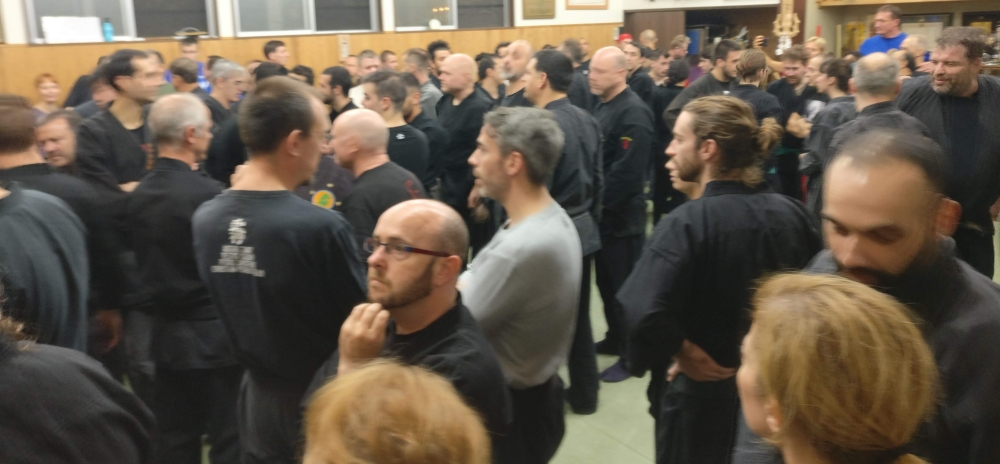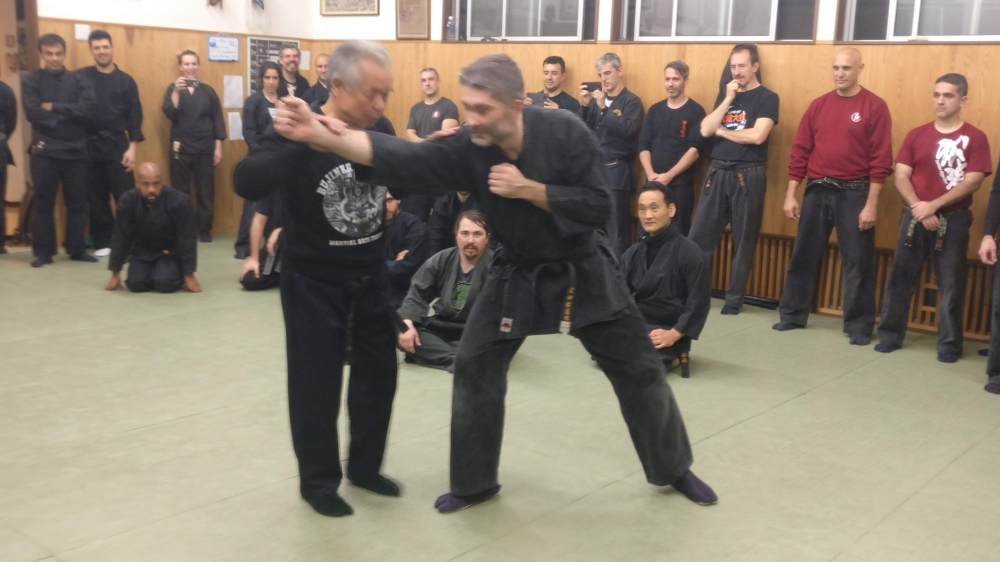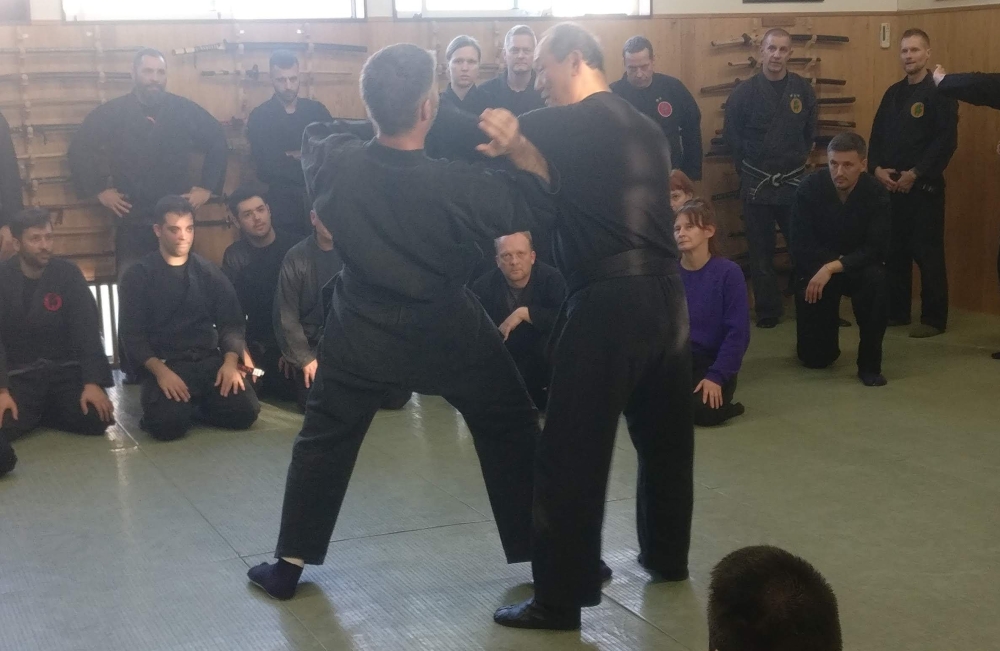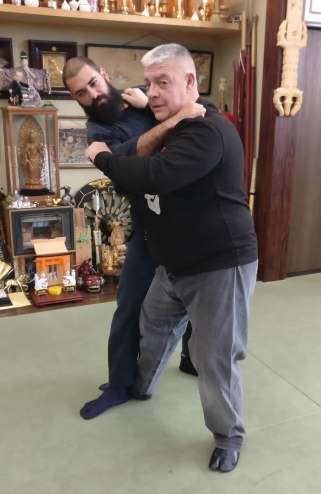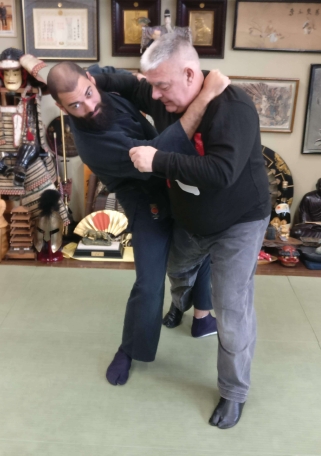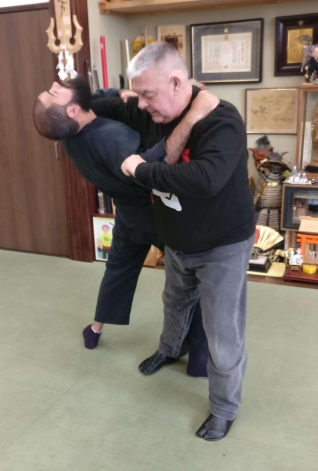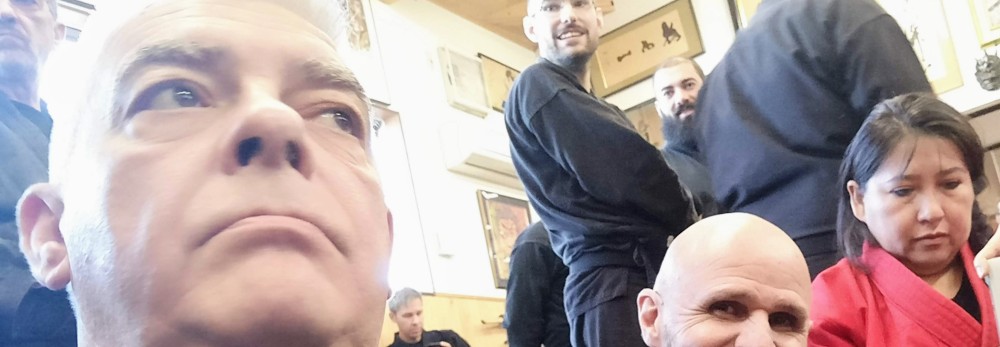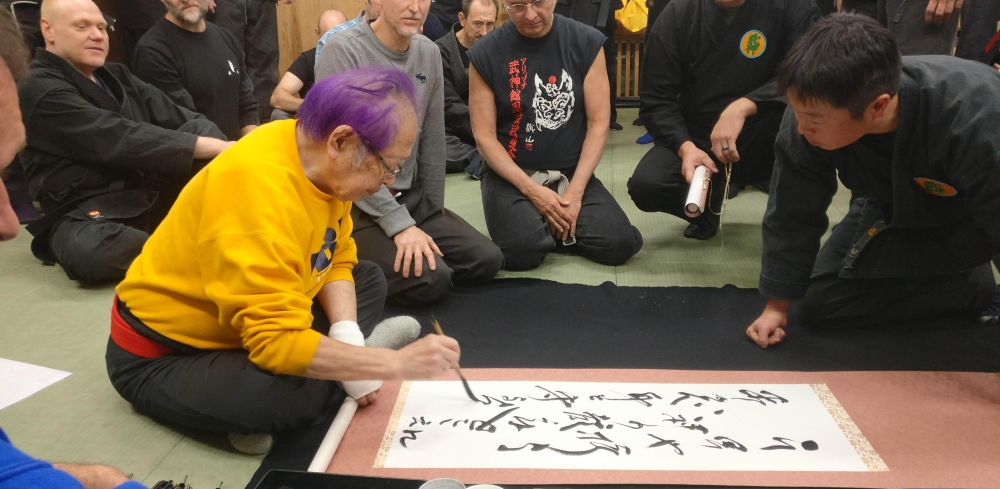No More!
From Shiro Kuma by kumablog

No more strength, no more technique, only control! That is how I can summarize the many classes I had the chance to do here at the Honbu.
I began to study this “control” in March, then again in July, and then now, I know what Sensei is doing. At the same time, I cannot do it.
To reach this “non-movement” requires many more years of practice. Control as we saw, is something natural that your body does when it is ready. This is not something you decide to do. Each time you want to do it, you are limited by parasitical movements. Small mistakes, impeach you from doing what you should do.
In every class, by Sensei (and some of the Dai Shihan), one concept keeps coming back. This is Amo isshun no tamamushi. (1)
I heard it for many years, but it is only now that Amo isshun no tamamushi begins to make sense. It means “to catch a bee in your hand and not be stung.”
When you enclose the bee in your hands, it stays in darkness but has space to walk. The bee doesn’t understand what is happening. At the same time, it doesn’t feel any threat and thus, does not sting you.
This is control.
Uke is trapped in a somewhat comfortable state. There is no pain, no hit. Sensei controls him with one or two fingers but doesn’t show any intention of finishing him. Uke is stuck in his thinking process and tries to escape to find a better angle of attack. This is pure survival and denotes a drastic change of attitude from the opponent. The initial “attacking mode,” disappear when Sensei wraps Uke’s attacks softly. Then Uke has to reconsider his options.
That is when he moves into survival mode. Now, his first priority is to save his integrity. He has no more willing to destroy Uke.
Survival is “seizon,” (2) and it is about existing, not about fighting. Sensei keeps saying “Tatakai wa Janai”, “there is no fight.” (3) It is what he means when he says that we have to control Uke as a whole, the same way you would, a bee in your hands. We have to wrap Uke so that he is only trying to survive. Then, no fight is happening.
Last March I didn’t get the “Tatakai wa Janai” right. “There is no fight” doesn’t mean, that there is no combat. It means that the attacker is not in a position (body and mind) to attack. Like the bee trapped in the hands.
The willingness to attack is there, but the possibility is not offered to the opponent. We do not stop fighting, we prevent Uke from attacking. If he were not wrapped by Tori’s movement, he would attack. But as there are no more strength and no more technique, there is no fight possible.
This is the exact philosophy of Sensei’s ninpō. The Bujinkan is not about warfare, it is about controlling without violence. Because we are who we are, there is no possibility of a fight.
My friend, Jack Hoban, studied under Dr. Robert Humphrey. Dr. Humphrey wrote the “warrior’s creed,” and you can read it on his t-shirt, each time jack is around.
Here it is:
“Wherever I walk, everyone is a little bit safer because I am there.
Wherever I am, anyone in need has a friend.
Whenever I return home, everyone is happy I am there.” (4)
Jack did many lectures about the creed. Check the link below. It will interest you and help you understand what we study at the Honbu. (5)
Like in “Amo isshun no tamamushi,” Hatsumi sensei teaches to control the world around us with peace. Our goal is to make it impossible for something terrible to happen.
No More!
_________________________________________
1 中一瞬 の 吉丁虫, Amo isshun no tamamushi: 中 amo:center, inside, during. 一瞬 isshun: one moment. 吉丁虫 tamamushi: jewel beetle
2 生存, Seizon: existence; being; survival; to exist; to live; to survive
3 戦いじゃない, Tatakai janai: no battle; no fight; no struggle; no conflict
4 https://www.lifevalues.com/warrior.htm
5 Recommended reading: https://www.alvinsoon.com/what-it-means-to-be-a-warrior/
…



